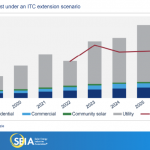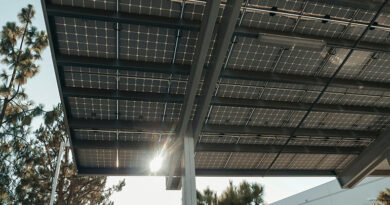Global solar installations expected to surpass 200 GW for first time in 2022 IHS Markit reports the milestone is within reach despite supply chain disruptions.
Global solar PV installations will see over 20% growth in 2022 and surpass the 200 GWDC barrier for the first time, at a total investment of at least $170 billion, despite continuing rising costs of production, according to a new report by the Clean Energy Technology service at IHS Markit.
Until recently, declining PV system costs — which decreased by more than 50% on global average from 2013 to 2020 — have been a crucial factor in the exponential growth of the industry, with global installed capacity increasing 275% during that time. In 2021 however, PV systems costs have increased by 4% year-on-year, bringing new challenges to the burgeoning market.
Despite the higher than anticipated cost environment, installations in key markets such as China, India, the United States and Europe are driving expansion again this year, with the highest growth coming from the distributed generation segment, led by China.
“The utility segment has been the most impacted in 2021, with multiple projects delayed or cancelled. By contrast, the strong growth of the distributed generation i.e., residential, commercial and industrial (C&I) sector has been one of the success stories of solar PV in 2021 — boosted by the fuel crisis and surging electricity prices, particularly in markets across Europe,” said Josefin Berg, research manager, clean energy technology at IHS Markit.
IHS Markit expects solar PV installations to experience double-digit growth in 2021. Continued growth through 2022 — when installations are expected to surpass the 200 GWDC barrier — would mark the second year in a row to experience double-digit growth of global installations in a high-price environment.
Rising costs set to continue next year until extra capacity in 2023 brings relief
The intense logistic and supply chain disruption over the past year has pushed the cost of solar PV materials to new highs. In addition, the announcement of new power restrictions in mainland China in the latter half of 2021 has severely restricted the output of manufacturers in certain provinces, impacting production of key materials such as metal silicon, polysilicon and solar glass — further increasing prices.
From October 2020 to October 2021, the price of polysilicon has grown over 200% alongside major price increases in other module materials such as solar glass and copper — forcing module manufacturers to increase their prices. IHS Markit estimates that, since August 2021, average module production costs have increased above 15% and module prices are now back to 2019 levels.
Other solar PV components such as inverters and trackers are also being impacted by the shortage of some materials (including semiconductor components) and the high cost of raw materials such as steel. IHS Markit expects that the current high costs of freight and subsequent shipping delays will continue well into 2022, particularly impacting the economics of international projects.
“There is significant appetite across global markets to invest in and develop solar installations, but the supply chain is just not ready to meet this level of demand, it needs time to adjust. We have seen this most clearly in the polysilicon market, which will continue to be a bottleneck for solar PV growth into 2022, until planned new capacity is ramped up from 2023 onwards,” said Edurne Zoco, executive director of clean energy technology at IHS Markit.
Continued supply chain tightness is expected to maintain high module prices until 2023. Costs will resume their downward trend from 2023 once the polysilicon capacity levels up with other nodes of the module supply chain and power restrictions ease up in China for other key module materials like polymers and solar glass. Increased module efficiencies projected on module technology roadmaps i.e., passivated contact cells (TOPCon) or Heterojunction (HJT) will also contribute to lower ($/W) production costs from 2023 onwards.
Policy uncertainty remains a factor
The wild card for the 2022 forecast is the policy uncertainty in the three major solar PV markets — China, the United States and India — that should be resolved by Q1 2022. These announcements will have major consequences for manufacturing capacity decisions and market installation pace. For instance, in China the length and intensity of current power restrictions will determine solar PV utilization rates and the volume that is available to the domestic and international markets. Future configuration of policy decisions and macroeconomic conditions could potentially undermine 20% of utility-scale forecast in the United States next year due to a combination of high costs, a potential extension of the ITC scheme and increasing hurdles to import modules from international markets.
“Despite the two-year impasse in solar PV cost decline, solar continues to be one of the energy technologies with the lowest capex and is the fastest energy source to install. Over 1,000 GWDC of new solar installations are expected to be installed through 2025, driven by solar technology competitiveness, versatility and installation speed, that will be instrumental to contribute to the decarbonization of the power system this decade,” said Edurne Zoco, executive director of clean energy technology at IHS Markit.
News item from IHS Markit
<!–
–>
Original Source: https://www.solarpowerworldonline.com/2021/11/global-solar-installations-expected-to-surpass-200-gw-for-first-time-in-2022/













